Heptabase vs. Scrintal
1. Web app vs. Desktop App
2. Live Collaboration
3. Data safety
4. Media and PDF Embeds
You can embed any media in docs or blocks. You will see it directly on the board when you embed media on a block.
If there is any media or image embedded, you can pop that out of the doc, and consume the content while taking notes simultaneously somewhere else in your knowledge base. That means you’re not limited to only a single page. One of Scrintal's differentiations is extracting any type of media and PDFs from a doc.
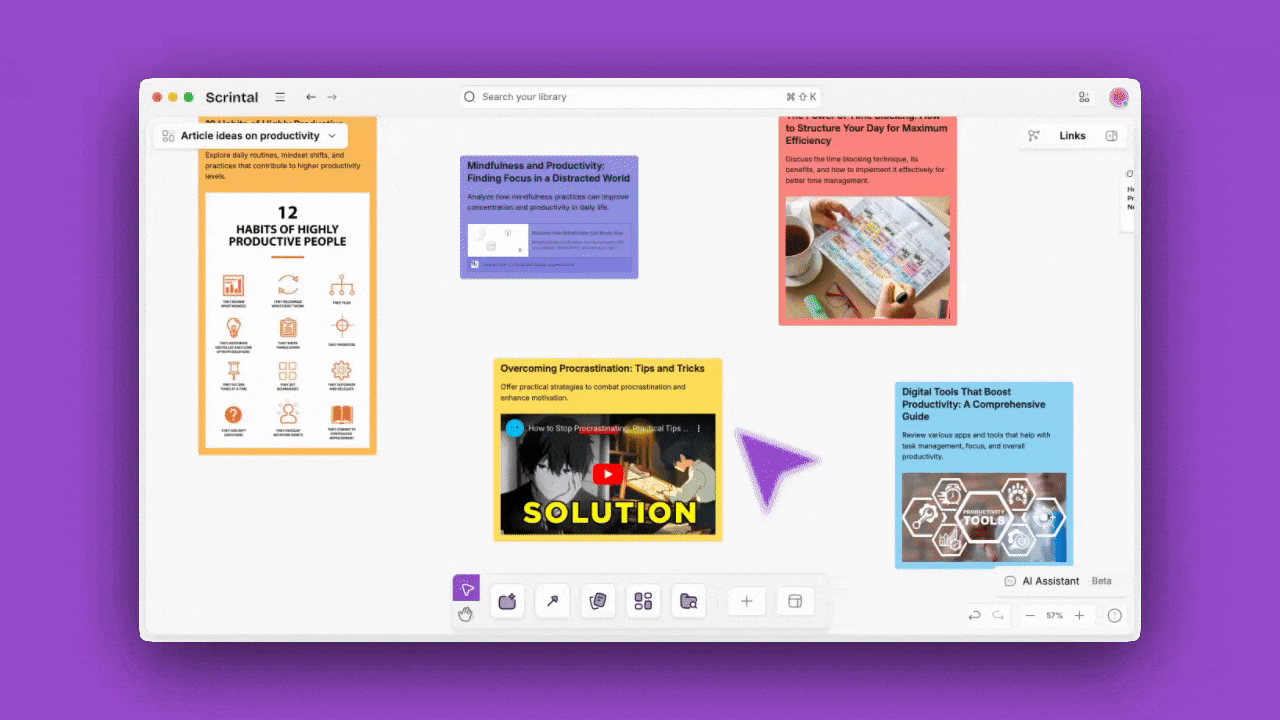
5. User Interface
This part is subjective, there is no right or wrong, better or worse. Two products adopt different user interfaces. It is really a matter of choice as to what you prefer as an individual. The user interface plays a pivotal role in shaping the overall user experience of any knowledge management tool.
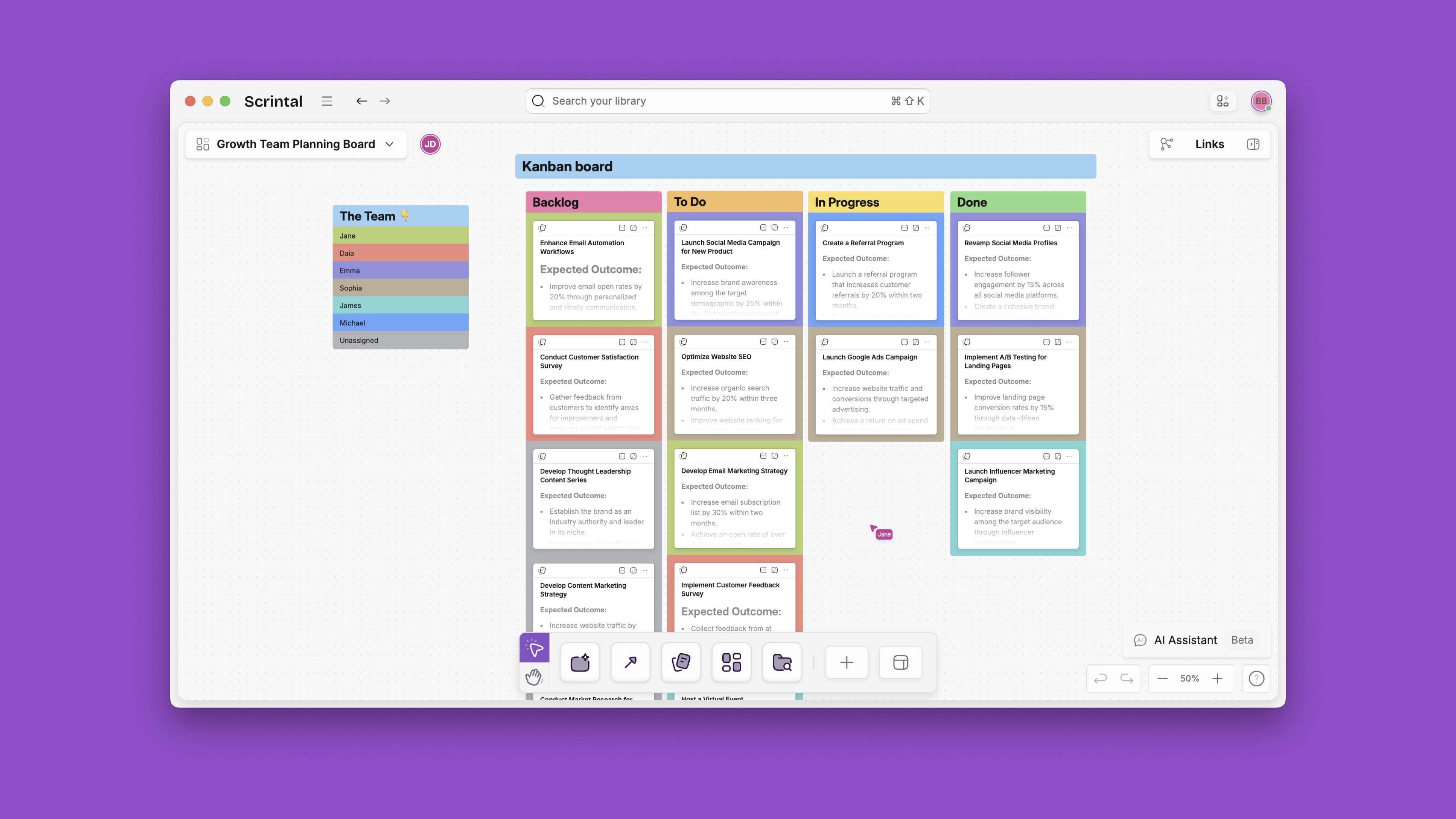
Heptabase's interface impresses with its sleek design and engaging typewriter animation during onboarding, creating an immersive initial experience. However, the gradual reveal of text throughout the onboarding process may extend its duration, and the focus of this introduction leans more towards knowledge management concepts than practical app navigation. It emphasizes Heptabase's role in breaking down complex projects into manageable pieces on a whiteboard, promoting improved review and comprehension.
In contrast, Scrintal's UI prioritizes usability and navigational clarity. A dedicated sidebar streamlines access to crucial views, enhancing overall organization. Scrintal's "My Desk" button allows you to access your workspace effortlessly. The sections in the sidebar "Docs" and "Boards," make navigation a breeze, and the structured menu bar has breadcrumbs for easy orientation. Scrintal UI facilitates quick actions for efficient doc management and a refreshed design language with updated icons and a modern color palette. This emphasis on user-friendliness and efficient navigation positions Scrintal as a tool for visual thinkers and knowledge managers.

6. Dark Mode
God damn you dark mode!!! This was probably one of the most asked features in our community and at some point it became a thing in our team so I had to put it here 😂
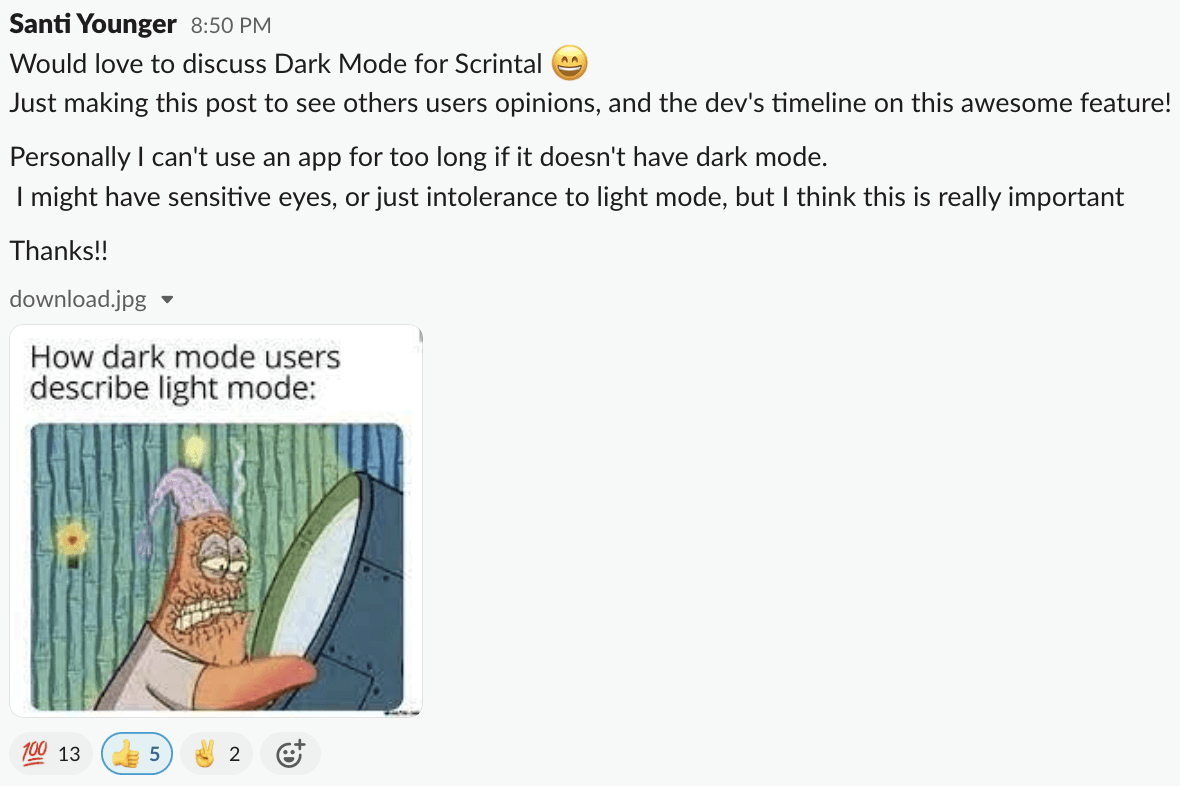
Below you can see our dark mode as well as Heptabase’s.
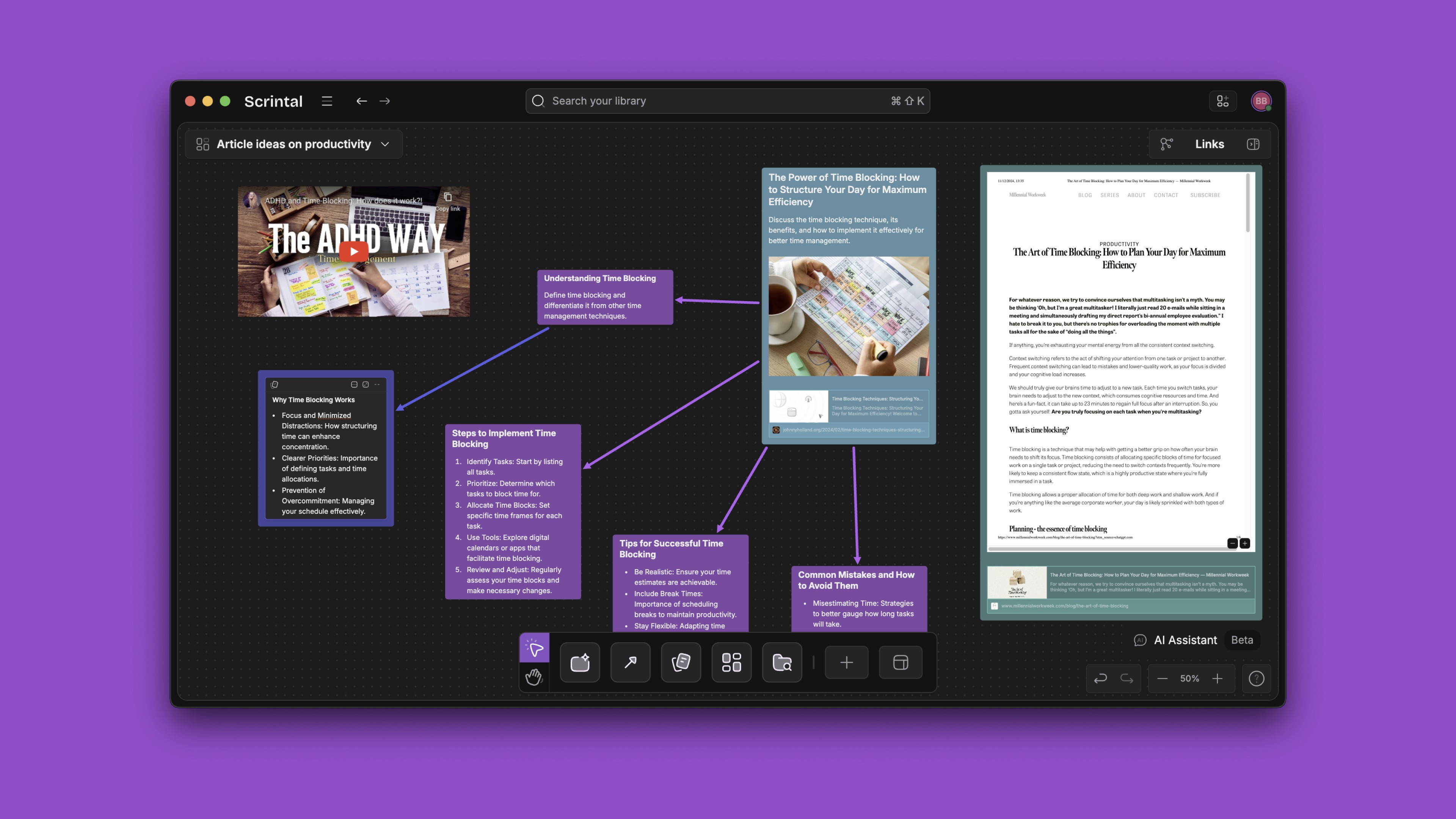
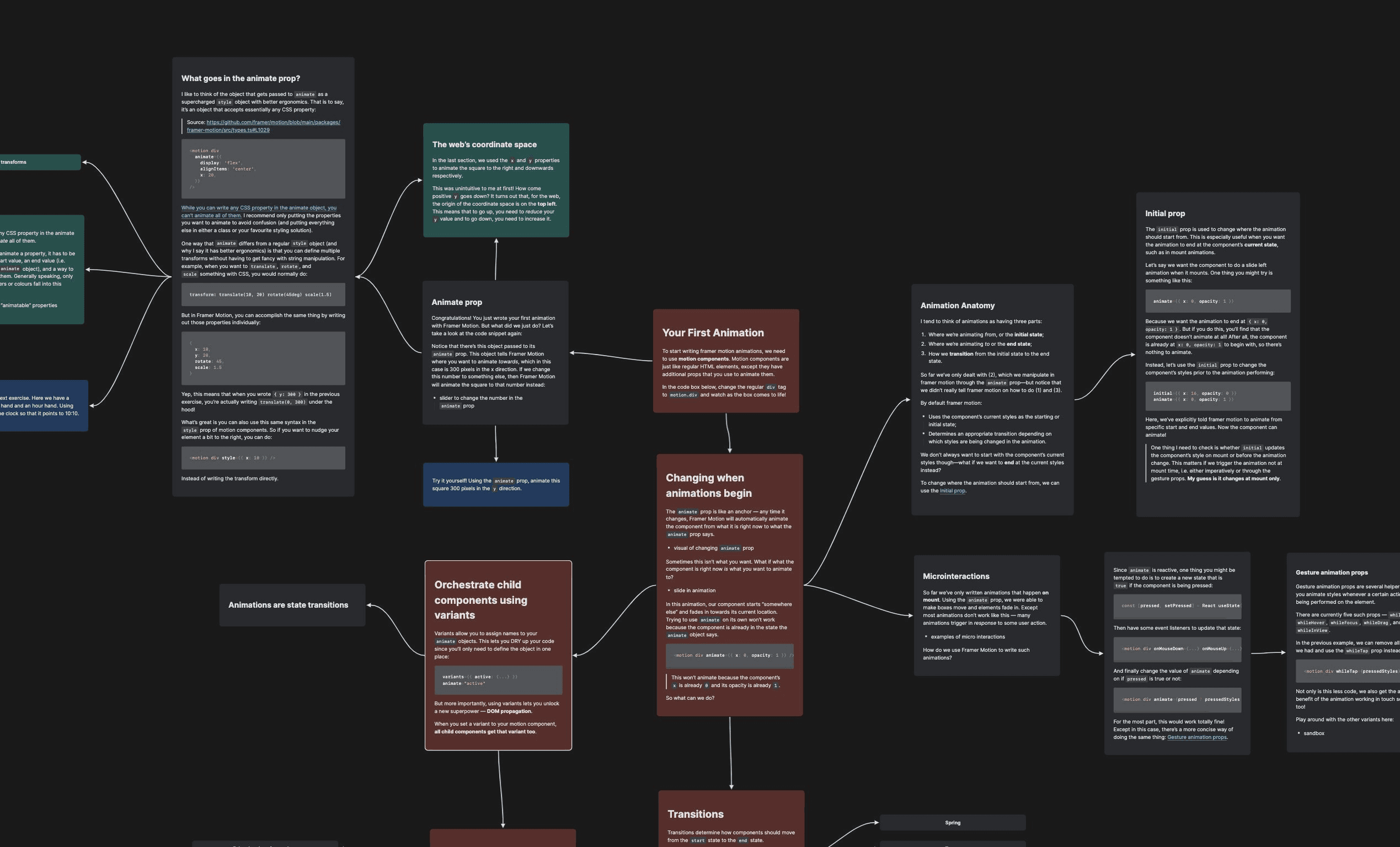
7. User Centricity
Both teams have adopted a user-centric approach that takes into account users’ feedback and suggestions seriously when it comes to product development.
I know the Scrintal team approach is pretty much appreciated by the users and set us apart from many other big companies, but the Hepta team is following a similar approach so I don't think there is a major difference here.
Anything else?
There are of course differences, and as I said above, Heptabase is currently offering more functionalities given their longer development time – without undermining their teams’ hard work.
But over time, it is likely that both products will offer more similar features but keep differentiating on the design philosophy and who they target as their main user base.
The target user decision will determine which type of features and integrations they will build and how the products will evolve over time.
Moment of Truth: Scrintal or Heptabase?
So what should you do?
To be honest, I believe these are two strong products with huge development upsides.
Heptabase looks like a great product with a young, hardworking team behind it. As an early-stage startup worker and enthusiast, knowing how difficult it is to build a sustainable business from scratch, I can only respect their efforts. It doesn’t really matter even if they are ‘competitors’.
In terms of company vision, I can only speak on behalf of the Scrintal team. We have a clear mission to empower people’s visual creativity, so they convert their cluttered ideas into meaningful outcomes. Our approach tries to harmonize the dynamic nature of idea generation with the precision of knowledge organization.
Scrintal will continue to evolve along the “think > develop > share” axis which means you will turn a raw idea into a full-fledged output in one place.
So I’ll advise you to go with your gut feeling and choose the one that feels closer to you. Or maybe both? It is really a matter of choice at this point.


